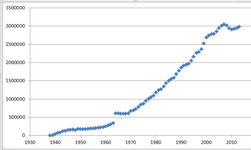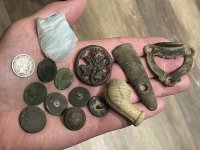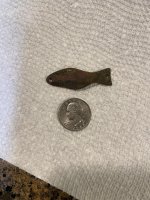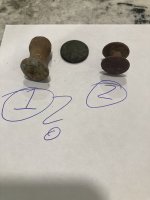Guadalcanal
Full Member
- Mar 27, 2012
- 103
- 40
- Detector(s) used
-
Bounty Hunter Quick Draw II
(A gift from Hosensack)
Fisher F2
Vulcan 360 Pinpointer
- Primary Interest:
- Metal Detecting
Circulation Statistics
Hello everybody! I enjoy programming a lot, and I thought to myself "Hey, why not try to make an application that shows the chances of finding old coins at parks?" I just started today, and I want to make that a reality. I think it would be neat to have a program that looks for things like:
It would then return things like
Status of project: I'm currently adding in mint statistics. It's going to take a while, since I have to add in each year for every coin, but I've finished all pennies and Jefferson nickels so far. I also did a quick check on the forums to see which kinds of clad people found, and I'm glad to say that I found correlation between findings and mintage!!!
Take a look for yourselves:
Mintage:
605,175,770,000 Pennies minted 1959-present 91.4%
56,749,710,000 Nickels minted 1959-present 8.6%
Discoveries:
2519 Pennies found 90.6%
262 Nickels found 9.4%
As you can see, the percentages are very close to each other. I will be checking the numbers again each time I add a new denomination of money, but so far it's looking good. I hope to finish entering in all the mintage dates in about two weeks. I've got 2000 lines of code just inputting all these dang numbers xD
I'll keep you all posted as I learn more.
Thank you all very much, I hope this program will be useful to everybody!
Hello everybody! I enjoy programming a lot, and I thought to myself "Hey, why not try to make an application that shows the chances of finding old coins at parks?" I just started today, and I want to make that a reality. I think it would be neat to have a program that looks for things like:
- What was there before the park?
- How Old is the Park?
- How many parks are there in the city?
- How many people live in the city?
- How many tourists visit the city each year?
- What is the soil like at the park?
- What is the climate like in the city?
- What is/was at the park?(Picnic areas, ice cream shops, baseball diamonds, ticket booths, etc.)
- What is the population density of the city?
It would then return things like
- Average age of coins underground
- Likelihood of finding artifacts
- Depth of items of different ages
Status of project: I'm currently adding in mint statistics. It's going to take a while, since I have to add in each year for every coin, but I've finished all pennies and Jefferson nickels so far. I also did a quick check on the forums to see which kinds of clad people found, and I'm glad to say that I found correlation between findings and mintage!!!

Take a look for yourselves:
Mintage:
605,175,770,000 Pennies minted 1959-present 91.4%
56,749,710,000 Nickels minted 1959-present 8.6%
Discoveries:
2519 Pennies found 90.6%
262 Nickels found 9.4%
As you can see, the percentages are very close to each other. I will be checking the numbers again each time I add a new denomination of money, but so far it's looking good. I hope to finish entering in all the mintage dates in about two weeks. I've got 2000 lines of code just inputting all these dang numbers xD
I'll keep you all posted as I learn more.
Thank you all very much, I hope this program will be useful to everybody!
Last edited:




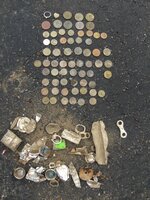
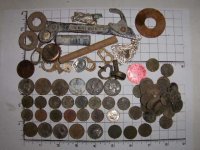
 It's interesting that you got roughly the same number of nickels as quarters... it could possibly be a fluke, since your sample set isn't terribly large, or it could be that almost everyone skips the signal that nickels give off. I'll need to do some research on this. I fear that the result will be that many factors are involved. This will make things more complicated, yes, but not impossible.
It's interesting that you got roughly the same number of nickels as quarters... it could possibly be a fluke, since your sample set isn't terribly large, or it could be that almost everyone skips the signal that nickels give off. I'll need to do some research on this. I fear that the result will be that many factors are involved. This will make things more complicated, yes, but not impossible. 